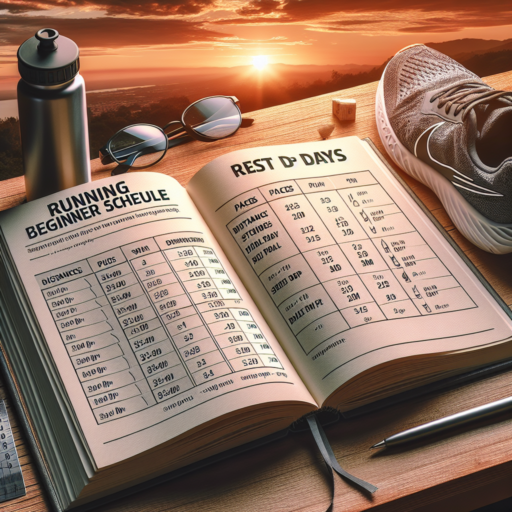What is a good running routine for beginners?
A good running routine for beginners focuses on building up endurance gradually without leading to burnout or injuries. Initially, beginners should aim for shorter runs, approximately 20 to 30 minutes, three times a week. This manageable schedule helps in accommodating the new activity into your lifestyle and allows your body to adapt to the physical demands of running. It’s essential to start at a pace where you can maintain a conversation — often referred to as the «talk test.» This approach ensures you’re running at a moderate intensity, which is sustainable and less likely to lead to overexertion.
For individuals new to running, incorporating walk intervals can be highly beneficial. This method, known as run-walk-run, alternates between running for a short duration and walking for a brief period to recover. Starting with one minute of running followed by two minutes of walking and gradually increasing the running intervals over time is a practical approach. As endurance improves, beginners can lengthen the running segments and reduce the walking breaks. This technique helps in building stamina, reducing the risk of injuries, and making the running routine more enjoyable.
Another key element for beginners is to include rest days in their routine. Rest is crucial for recovery, allowing the muscles to repair and grow stronger. Integrating strength and flexibility exercises into your weekly schedule also supports your running journey by improving your overall physical condition and helping to prevent common running-related injuries.
How many days should a beginner runner run?
Embarking on a running journey is an exciting prospect for many beginners, teeming with visions of improved health and vitality. However, one of the most pressing questions that newcomers have is how many days per week they should commit to running. It’s a valid concern, as balancing the eagerness to progress with the need to prevent injury is crucial. Generally speaking, most experts recommend that beginners aim to run three to four days per week. This frequency allows for a harmonious blend of running sessions, recovery periods, and, importantly, the prevention of common running-related injuries.
When starting, the focus should primarily be on consistency rather than intensity or duration. Running three days a week provides a structured framework for your body to adapt to the new demands being placed on it, promoting gradual improvements in cardiovascular and muscular endurance. Additionally, interspersing rest days between running days helps to facilitate recovery, an essential component of any training regimen. It’s during these rest periods that your body repairs itself, becoming stronger in the process.
Moreover, flexibility in your running schedule can contribute significantly to your long-term commitment and enjoyment of running. For example, following a run/walk strategy during your sessions can further reduce injury risk while allowing your body to adjust more naturally to running. Ultimately, listening to your body and adjusting your running days and intensity accordingly is key. Paying attention to signs of fatigue or discomfort is essential for setting a sustainable pace and preventing overtraining.
What are good running intervals for beginners?
For beginners looking to dive into the world of running, interval training is an excellent way to get started. Unlike continuous runs, which can be daunting and unsustainable for novices, intervals mix short, manageable bursts of running with periods of rest or lower-intensity exercise. This approach not only helps in building stamina but also keeps the workout engaging and less intimidating.
Starting with basic intervals can be highly effective for those new to running. A popular and accessible interval for beginners is the 1:2 ratio, where you run for one minute and then walk for two minutes. This method allows for an introduction to running without overwhelming the body, giving beginners a chance to adjust physically and mentally to the new exercise routine.
Another approach is the run/walk method, which can be gradually adjusted as endurance improves. Initially, one might start with running for 30 seconds followed by walking for 1 to 1.5 minutes. Over time, the running intervals can be increased as the walking durations decrease, shifting the balance as the runner’s stamina and confidence grow. These interval adjustments offer a tailored running plan that evolves with the newcomer’s growing capabilities.
No se han encontrado productos.
How to run for 30 minutes for beginners?
Embarking on the journey to run for 30 minutes straight can seem daunting for beginners. However, with the right approach and perseverance, it’s an attainable goal. The first step is to understand that running, like any other physical activity, requires a gradual increase in endurance and strength. Starting slow and building up your capacity over time is key to reaching your 30-minute running milestone without injury or excessive fatigue.
Creating a Running Schedule
One effective strategy to achieve your running goal is to create a structured schedule. This plan should include alternate days of running and rest to allow your body sufficient recovery. Initially, your running days can consist of shorter intervals of jogging followed by walking. For example, start with a sequence of jogging for 1 minute and walking for 2 minutes, repeating this cycle for a total of 20 to 30 minutes. Gradually, you should aim to increase the jogging intervals and decrease the walking periods until you are able to jog for the full 30 minutes without stopping.
Listening to Your Body
While pushing through some discomfort is part of increasing your running endurance, it’s crucial to listen to your body and discern between good pain and harmful pain. Good pain might be the burning lungs or tired legs that come with pushing your physical limits. In contrast, sharp or persistent pain in your joints or muscles could be a sign of overuse and should not be ignored. Ensuring you wear proper running shoes and follow a balanced diet can also play a significant role in preventing injuries and improving performance.
To make running for 30 minutes an achievable goal, the importance of patience and gradual progression cannot be overstated. Incorporating walking breaks, listening to your body’s signals, and consistently following a structured plan will pave the way for success. Remember, every runner’s journey is unique, so customize your training plan to fit your current fitness level and adjust as you improve.




